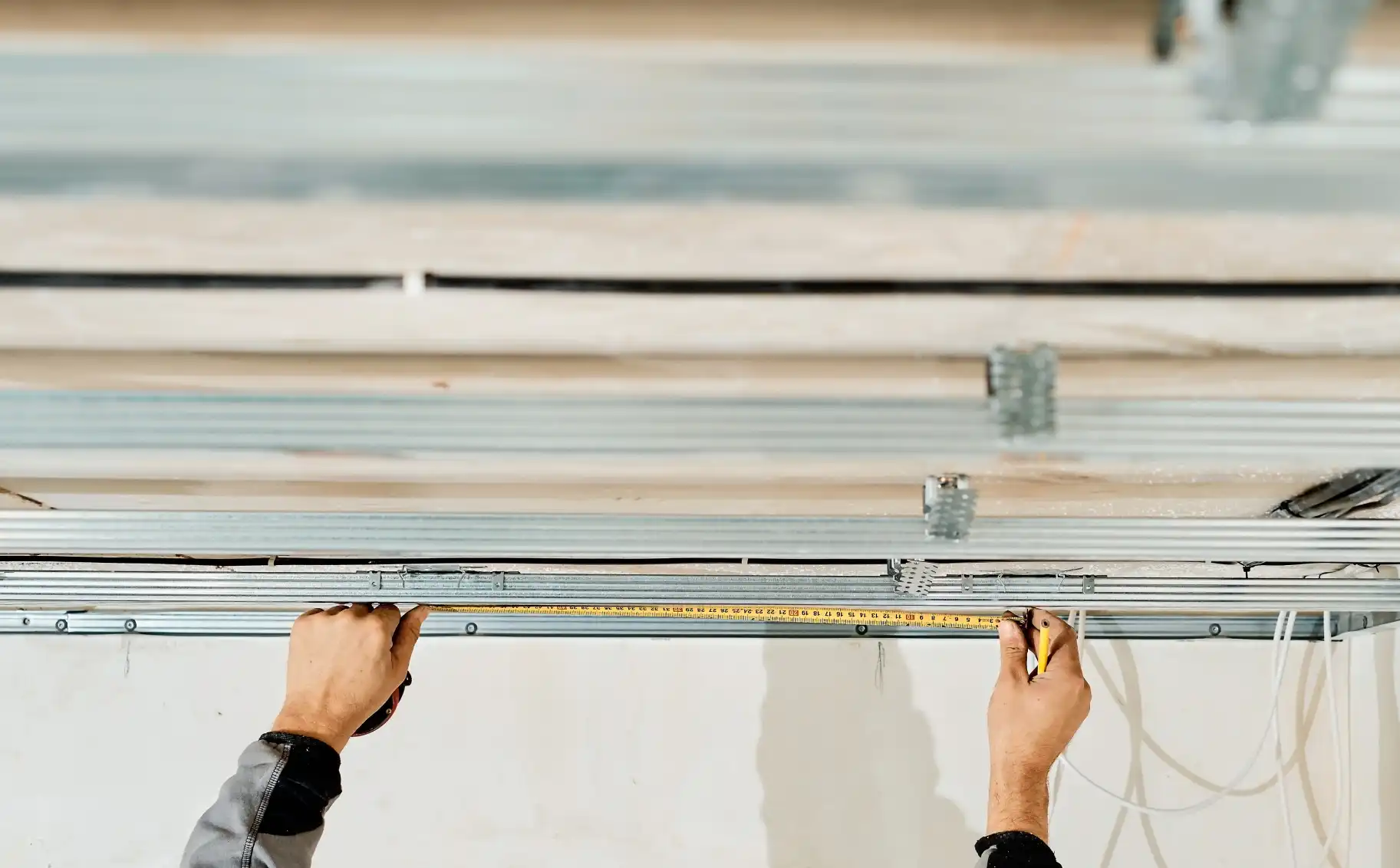
Loft hatch insulation is a simple, cost-effective DIY task that can help prevent heat loss, draughts, and condensation. While it might seem like a small detail, ensuring that your loft hatch is well-insulated can contribute to greater energy efficiency in your home, reducing both heating costs and discomfort caused by cold air seeping through. Here’s everything you need to know about insulating a loft hatch, from methods and materials to cost considerations and benefits.
Why Should You Insulate a Loft Hatch?
Many homeowners focus on insulating their loft spaces but often overlook the loft hatch itself. An uninsulated loft hatch can be a major source of heat loss, creating an energy gap that compromises the effectiveness of the rest of the loft insulation. Here are some key reasons why insulating a loft hatch is important:
- Prevents Heat Loss: Warm air rises, and without proper insulation, a loft hatch can allow significant heat to escape, making your home less energy efficient.
- Reduces Draughts: Cold air can enter your home through gaps around an unsealed loft hatch, making rooms feel colder and increasing heating costs.
- Prevents Condensation Issues: Warm, moist air from living spaces can enter the loft and condense on cold surfaces, leading to dampness, mold growth, and even timber decay.
- Improves Overall Insulation Efficiency: A well-insulated loft hatch complements existing insulation in the loft, enhancing the overall effectiveness of your home’s thermal barrier.
Is it Worth Insulating a Loft Hatch?
Yes, insulating your loft hatch is a quick and affordable improvement that can make a noticeable difference in your home’s comfort and energy efficiency. Even though the financial savings in energy bills may not be substantial on their own, the combined effect of a well-insulated home leads to better thermal regulation and reduced heating costs over time. Moreover, it’s a straightforward DIY project that requires minimal investment compared to the potential benefits.
What is the Best Insulation for an Attic Hatch?
There are several types of loft insulation to choose from. Each material has unique properties that make it more suitable for certain environments and loft configurations. Here, we detail the loft insulation types and their properties.
1. Roll or batt insulation
Batt or loft insulation roll is best suited for lofts with regular joist spacing and minimal obstructions. It performs well in both cold and moderate climates. In cold climates, thicker layers or multiple layers can be installed to achieve higher R-values (a measure of thermal resistance).
It is particularly effective in areas with large temperature fluctuations for consistent insulation year-round. Fibreglass and mineral wool variants are excellent choices for humid environments because of their moisture resistance. Sheep’s wool works well in areas prone to condensation.
2. Loose-fill insulation
Loose-fill insulation is well-suited for lofts with irregular shapes, obstacles or hard-to-reach areas. It is an excellent choice for older properties with unusual architectural features or lofts with extensive wiring and plumbing. In cold climates, loose-fill excels because it can be easily added to increase insulation depth in attic floors.
It is also ideal for retrofitting insulation in existing homes without major disruption. Cellulose loose-fill performs well in areas with fluctuating humidity levels. This is because of its ability to absorb and release moisture without losing its insulating properties. For windy areas, containment measures will prevent the insulation from shifting.
3. Spray foam insulation
Spray foam insulation is beneficial for lofts in high-humidity areas because of its air and moisture-sealing properties. Closed-cell spray foam is effective in flood-prone regions as it acts as a water barrier. It is ideal for lofts with complex roof structures, numerous penetrations or irregular surfaces.
Also, closed-cell and open-cell spray foam are well-suited for lofts in cold climates and offer high R-values. In hot climates, it effectively keeps hot air out of the living space. Its air-sealing properties make it excellent for windy areas with significant temperature differences between indoor and outdoor environments.
4. Rigid board insulation
Rigid board insulation is suitable for lofts where space is at a premium. It is particularly effective in cold climates where maximising thermal resistance is important. Rigid board insulation is ideal for creating insulated storage areas in lofts. This is because boards can withstand foot traffic when properly installed over joists.
Loft insulation boards work well for insulated loft hatch and dormer wall areas. In high-humidity areas, extruded polystyrene (XPS) or polyisocyanurate (PIR) boards are preferred because of their superior moisture resistance. Insulated loft boards are also a good choice for flat or low-slope roofs where water resistance is important.
5. Multi-foil insulation
Multi-foil insulation is effective in lofts with very limited headroom, where traditional thick insulation would be impractical. It performs best in climates with hot summers because it excels at reflecting radiant heat. Also, it is well-suited for moderate climates to achieve a balance of winter warmth retention and summer heat reflection.
In renovation projects where minimising disruption is key, multi-foil is excellent because of its thin profile and ease of installation.
6. Natural fibre insulation
Natural fibre insulation is best suited for environmentally conscious builds or renovations. It performs exceptionally well in areas with fluctuating humidity levels because of its moisture management properties. Cotton and hemp insulations are ideal for lofts in homes where occupants have sensitivities to synthetic materials or chemical off-gassing.
Wood fibre insulation is effective in cold climates because of its high thermal mass, which helps regulate temperature fluctuations. Natural fibre insulations are also excellent for a dormer loft conversion or mansard loft conversion where sound insulation is a priority. They are well-suited for properties aiming for green building certifications.
Find out more about different types of loft insulation with our detailed guide.
How to Insulate a Loft Hatch
Insulating a loft hatch is a relatively simple process that depends on the type of hatch in your home. Follow these steps for the best results:
- Identify the Type of Hatch: Determine whether you have a lift-out or drop-down hatch, as the insulation approach may vary.
- Measure the Hatch: Take precise measurements to ensure the insulation material will fit properly.
- Cut and Attach Insulation: For lift-out hatches, you can glue rigid foam insulation or a sealed bag of fiberglass insulation to the back of the hatch. For drop-down hatches, ensure that the insulation does not obstruct the ladder mechanism if present.
- Seal the Edges: Use weatherproofing strips or adhesive foam tape around the perimeter of the hatch to prevent draughts.
- Check for Airtightness: Ensure the hatch fits snugly and that there are no visible gaps allowing air to flow freely.
How to Draught Proof a Loft Hatch
Draught proofing is just as crucial as insulation. Even if your loft hatch is well-insulated, air leaks around its edges can reduce effectiveness. Here’s how to draught-proof your loft hatch:
- Apply Self-Adhesive Foam Strips: These are easy to install and provide a cushioned seal when the hatch is closed.
- Use EPDM Draught Proofing Tape: This durable material is ideal for sealing gaps and preventing unwanted air movement.
- Install a Closing Mechanism: Some loft hatches benefit from a latch or securing system that pulls the hatch firmly onto the draught-proofing strip for a tighter seal.
How Much Energy is Lost Through a Loft Hatch?
The energy lost through an uninsulated loft hatch depends on factors such as hatch size and the loft’s insulation. A standard 500mm x 500mm loft hatch could result in heat loss of approximately 40kWh per year, increasing to around 60kWh if draughts are present. While this may only equate to a small amount in energy bills (roughly £3.50 annually), the impact of an uninsulated loft hatch in an otherwise well-insulated home can be significant over time.
How Much Does it Cost to Insulate a Loft Hatch?
The cost of insulating a loft hatch is relatively low compared to the benefits. Here’s a breakdown of potential expenses:
- DIY Insulation: Less than £15, depending on the materials used.
- Draught Proofing Strips: Self-adhesive strips cost under £10.
- New Insulated Loft Hatches: Prices range from £40 to over £400, with well-insulated options available for around £55.
If you’re installing a new loft hatch as part of a home renovation, it’s worth choosing a pre-insulated model for maximum efficiency.
Conclusion
Insulating and draught-proofing your loft hatch is an easy, cost-effective way to improve your home’s energy efficiency. Whether upgrading an existing hatch or installing a new one, these simple steps can help reduce heat loss, enhance comfort, and prevent moisture issues in the loft space.
For homeowners planning a loft conversion in London, proper insulation is essential. Whether working with builders West London or considering a dormer loft conversion or mansard loft conversion, ensuring a well-sealed and insulated loft hatch is a crucial step toward achieving an energy-efficient home. A well-insulated loft space can significantly enhance the value and comfort of your property, making it a worthwhile investment.




